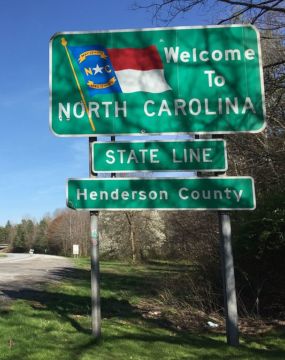Posts written by Rebecca Tippett
Keep up with our latest demographic insights

North Carolina’s population has grown by 848,000 new residents, or 8.9%, since the 2010 Census, rising to 10.4 million residents as of 2018. The state’s annual growth slowed during the Great Recession of 2008 and subsequent recovery period but began to accelerate mid-decade. Since 2015, North Carolina has averaged more than 110,000 new residents each year. Most of this growth is from net migration, meaning more people are moving to our state than those who…

North Carolina’s Hispanic population is nearing 1 million, with 997,000 residents in 2018. The state’s Hispanic/Latino population grew from just over 75,000 in 1990 to 800,000 in 2010. Between 2010 and 2018, the U.S. Census Bureau estimates that North Carolina’s Hispanic population grew by 197,000 new residents, an increase of 24.6%, faster than the growth of this population nationwide (18.6%). More than one in four NC Latino residents live in two counties: Mecklenburg (148K) or Wake (113K).

It’s been almost three years since the 2016 general election and in that time, there have been demographic shifts in North Carolina. With just under a year before the 2020 election cycle, we’ve broken down the changes by partisan composition and who makes up our newly registered voting population. First, we should note: our state’s population continues to grow North Carolina has experienced steady population gains since 2016, with net gains masking a larger turnover…

2020 Update: The George Washington Institute for Public Policy has expanded its analysis of the fiscal impact of the census. According to their most recent estimate, there are $1.5 trillion dollars associated with 316 census-guided federal programs. In FY17, North Carolina received nearly $44 billion. In late June, I spoke on a panel focused on population trends in the Charlotte metropolitan region, the 2020 Census, and how businesses and local governments are gearing up for…

Nationally, there are 383 metropolitan statistical areas (MSA), which are defined as an economically integrated set of counties with a core central city with a population of 50,000 or more. They range in size from Carson City, Nevada (55,414) to the New York-Newark-Jersey City MSA (19,979,477) which crosses New York, New Jersey, and Pennsylvania. Within North Carolina, there are 17 unique metro regions, ranging from Goldsboro (123,248) to Charlotte-Concord-Gastonia (2,569,213 across NC and SC). With…

Father’s Day will be celebrated on Sunday, June 16, 2019. We’ve compiled some key stats about parenting and fatherhood in North Carolina. A record number of households in North Carolina are headed by single dads. There were 98,434 single father households in NC in 2017, an increase of more than 7,000 since 2016 and the highest number observed since 1960, when just 7,769 households with children were headed by single fathers. Single father households represented…

North Carolina’s Hispanic or Latino population increased by nearly 116,000 resident between 2012 and 2017, an increase of 13.8% in just five years. The adult population grew faster than the child population over this period. And for both Latino adults and children, growth was due entirely to an increase in the citizen population. The non-citizen population of Latino children and adults decreased by 23.1% and 10.4%, respectively, between 2012 and 2017. As a result of…

Between 2014 and 2026, nearly 1.6 million students will enter the state’s K-12 public school system as ninth graders. Under current graduation rates, more than 213,000 of them are predicted to drop out or delay high school graduation. Let’s break it down further. For every 100 ninth graders that start public high school in NC: 86 graduate high school within 4 years. 14 dropout or take more than 4 years to complete high school. In…

Successfully attaining a high school diploma is a necessary step in the transition to either college or gainful employment. Earning a high school equivalency credential, like the GED, is not the same as a high school diploma. Compared to high school graduates, individuals with a GED earn less in the labor market and are less likely to go to college. The high school diploma is more than an indicator of academic knowledge; it is also a barometer of the individual’s capacity to stick with a task and other soft skills that may be harder to quantify.

Nationally, 46% of women aged 25-64 reported having an associate degree or higher in 2017 compared to 39% of men, a gap of seven percentage points. In North Carolina, this gap was even larger: 48% of women had an associate degree or higher compared to 38% of men, a gap of 10 percentage points.Compared to men, North Carolina women are more likely to report the completion of an associate degree (11.9% vs. 8.3%), bachelor’s (23.3% vs. 20.1%), or master’s (9.8% vs. 6.8%) degree. Men are slightly more likely than women to hold a professional degree (1.8% vs. 1.7%) or a doctorate (1.3% vs. 1.1%).
Your support is critical to our mission of measuring, understanding, and predicting population change and its impact. Donate to Carolina Demography today.